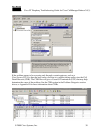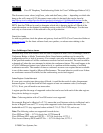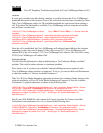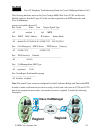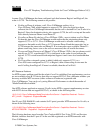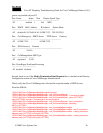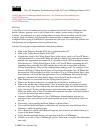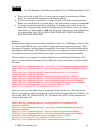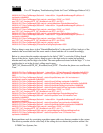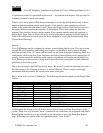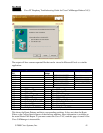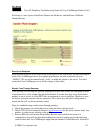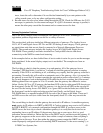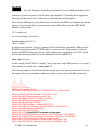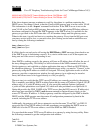
Cisco IP Telephony Troubleshooting Guide for Cisco CallManager Release 3.0(1)
© 2000 Cisco Systems, Inc. 38
• Watch out for the @ sign. This is a macro that can expand to include many different
things. It is often used in combination with filtering options.
• If a device isn't part of a partition, it is said to be part of the Null or default partition.
Every user should be able to call that device. The Null partition is always searched last.
• If you dial an outside number that is matching a 9.@ pattern and it takes 10 seconds
before the call goes through, check the filtering options. By default, with a 9.@ pattern,
when dialing a 7-digit number, it will wait 10 seconds. You need to apply a Route Filter
to the pattern that says LOCAL-AREA-CODE DOES-NOT- EXIST and END-OF-
DIALING DOES-NOT-EXIST.
Partitions
Route partitions inherit the error handling capabilities of the Cisco CallManager software. That
is, a console and SDI file trace is provided for logging information and error messages. These
messages will be part of the digit analysis component of the traces. Even with the traces below,
knowing how the Partitions and Calling Search Spaces are configured and what devices are in
each partition and its associated calling search space, is vital in determining the problem.
The trace below is an example of a number dialed that is in the Calling Search Space of the
device. For more detailed explanations about SDI traces, please review the case studies in this
document.
08:38:54.968 Cisco CallManager|StationInit - InboundStim - OffHookMessageID tcpHandle=0x6b88028
08:38:54.968 Cisco CallManager|StationD - stationOutputDisplayText tcpHandle=0x6b88028, Display=
5000
08:38:54.968 Cisco CallManager|StationD - stationOutputSetLamp stim: 9=Line instance=1
lampMode=LampOn tcpHandle=0x6b88028
08:38:54.968 Cisco CallManager|StationD - stationOutputCallState tcpHandle=0x6b88028
08:38:54.968 Cisco CallManager|StationD - stationOutputDisplayPromptStatus tcpHandle=0x6b88028
08:38:54.968 Cisco CallManager|StationD - stationOutputSelectSoftKeys tcpHandle=0x6b88028
08:38:54.968 Cisco CallManager|StationD - stationOutputActivateCallPlane tcpHandle=0x6b88028
08:38:54.968 Cisco CallManager|Digit analysis: match(fqcn="5000", cn="5000",
pss="RTP_NC_Hardwood:RTP_NC_Woodland:Local RTP", dd="")
Above you can see in the Digit Analysis component of the trace the "pss" (Partition Search
Space, also known as Calling Search Space) is listed for the device placing the call. Below, you
can see that "RTP_NC_Hardwood;RTP_NC_Woodland;Local_RTP" are the partitions this
device is allowed to call.
08:38:54.968 Cisco CallManager|Digit analysis: potentialMatches=PotentialMatchesExist
08:38:54.968 Cisco CallManager|StationD - stationOutputStartTone: 33=InsideDialTone
tcpHandle=0x6b88028
08:38:55.671 Cisco CallManager|StationInit - InboundStim - KeypadButtonMessageID kpButton: 5
tcpHandle=0x6b88028
08:38:55.671 Cisco CallManager|StationD - stationOutputStopTone tcpHandle=0x6b88028
08:38:55.671 Cisco CallManager|StationD - stationOutputSelectSoftKeys tcpHandle=0x6b88028
08:38:55.671 Cisco CallManager|Digit analysis: match(fqcn="5000", cn="5000",
pss="RTP_NC_Hardwood:RTP_NC_Woodland:Local RTP", dd="5")
08:38:55.671 Cisco CallManager|Digit analysis: potentialMatches=PotentialMatchesExist



